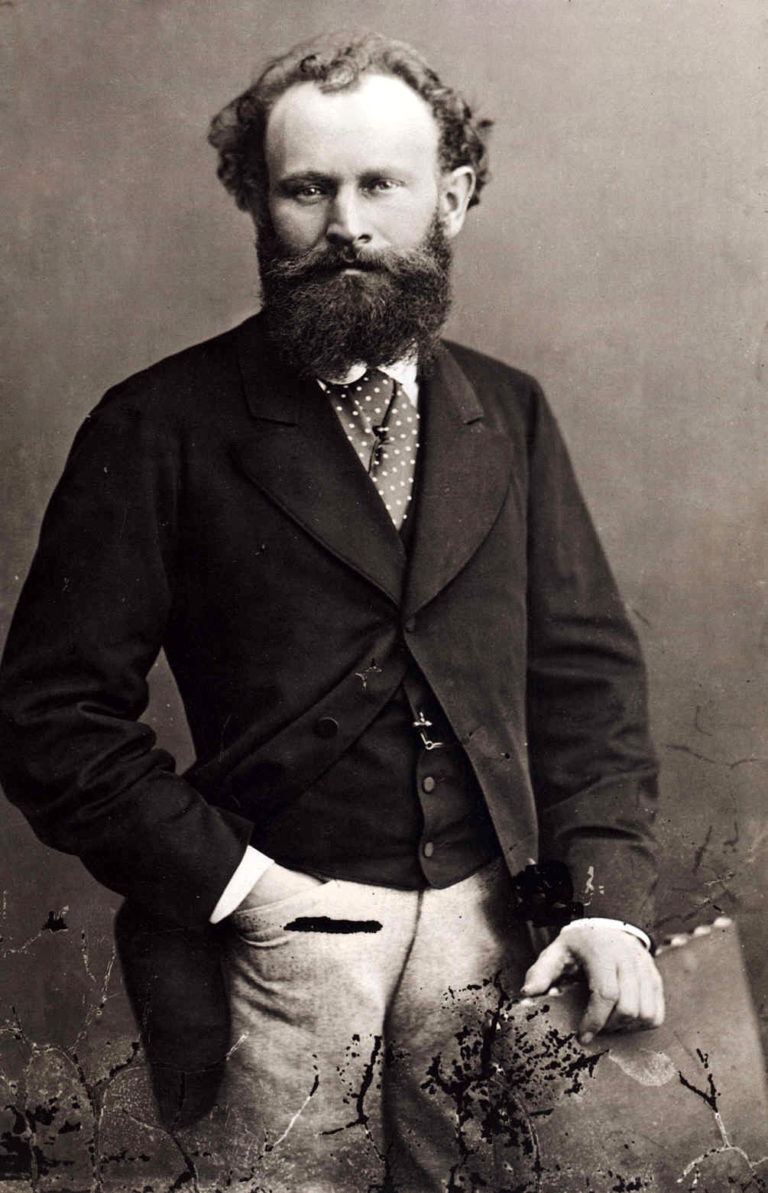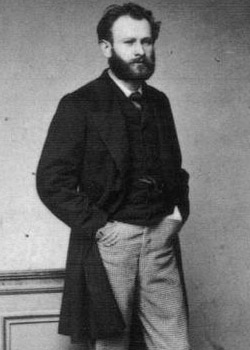
1832 - 1883
Edouard Manet

description
French painter Édouard Manet was one of the first 19th-century artists to paint modern life and a pivotal figure in the transition from Realism to Impressionism.
Edouard’s father did not want him to become an artist and prophesied a brilliant career for him as a lawyer. Despite that, Manet devoted himself to the arts.
In the early period of his work, the painter asked older and more famous painters of the 19th century for advice. He absorbed various artistic movements of his time: Classicism, Romanticism and Realism. However, very soon Manet refused to follow the famous painters, and he began searching for his own style. His early masterpieces ‘’The Luncheon on the Grass’’ (‘’Le déjeuner sur l’herbe’’) and ‘’Olympia’’, created in 1863, caused great controversy and served as rallying points for the young painters who would create Impressionism. Today they are considered watershed paintings that mark the beginning of modern art.
Key ideas:
– Manet’s works adhere to the new principles of expressing the world. They are full of optimism and cheerfulness.
– The artist perfectly depicted the life of the Parisians of the 19th century. He looked at the world with spontaneity and freedom. At the same time, his paintings show not only the freshness of color and refinement, but also a departure from the traditional black and white modeling, from the illusoriness in the transfer of volume.
– At first, the artist preferred to romanticize reality. Later he discovered the real beauty and poetry of everyday life. At the same time, there is no external action in most of Manet’s works. They demonstrate the reduction of plot to motive.
– It is difficult to determine the genre of many paintings by Manet, as they often combine a portrait and a household scene or an image of life and a landscape.
– A new quality of Manet’s paintings at the end of 1860s is the individuality of each character. Manet sought to maximally individualize the characters of his paintings, which encouraged him to use his relatives and friends as models. The tendency to merge genres of painting, combining life, portrait, still life and the landscape into one, can be clearly seen in Manet’s early works.
1832
1847
1850
1853
1859
1863
1883
The birth of the artist
Failed the exam

The Art Studio

Traveling around Italy

Participation in exhibition

Created his own pavilion

The death

Edouard Manet
On Artist
flow
Классицизм
Реализм
friends
Oscar-Claude Monet
Albert-Charles Lebourg
Camille Pissarro
Berthe Morisot
Edgar Degas
Henri Fantin-Latour
Charles Auguste Émile Durand
Jean Béraud
artists
Oscar-Claude Monet
Gustave Courbet
El Greco
Caravaggio
Ferdinand Victor Eugène Delacroix
By Artist
flow
Импрессионизм
Постимпрессионизм
friends
Berthe Morisot
Henri Fantin-Latour
Oscar-Claude Monet
Edgar Degas
artists
Oscar-Claude Monet
Albert Marie Lebourg
Camille Pissarro
Pierre Bonnard
Edward Hopper
Ilya Repin
Paul Gauguin
Edgar Degas
Pierre-Auguste Renoir
Louise Abbéma
